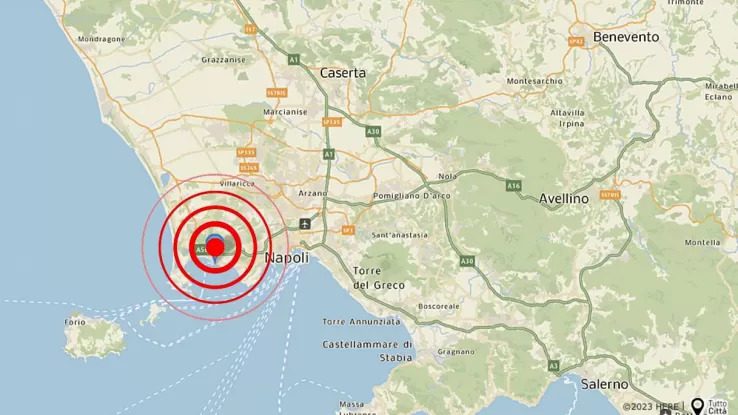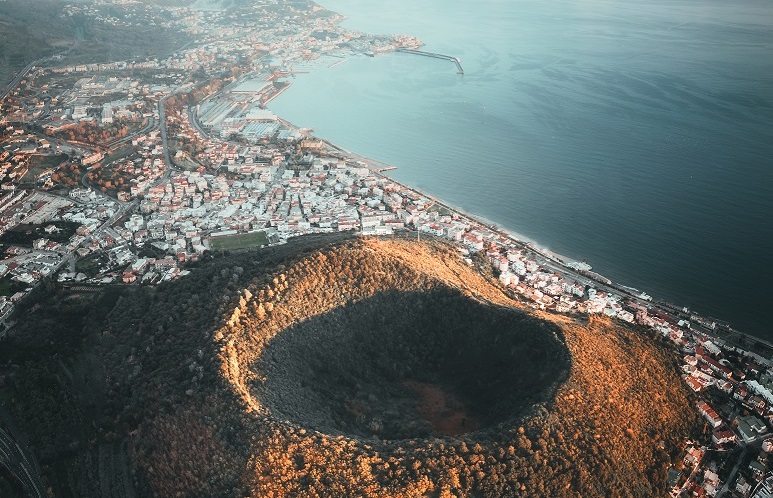Campi Flegrei area near Naples has been jolted by more than 1,100 earthquakes in a month
The Guardian – The Italian government is planning for a possible mass evacuation of tens of thousands of people who live around the Campi Flegrei supervolcano near Naples.
The new measures, which include a scheme to check on the strength of buildings in the area after months of repeated earthquakes, will be discussed at a cabinet meeting on Thursday, a government statement said.
Campi Flegrei (Phlegraean Fields) lies to the west of Naples and is dotted with towns and villages, including Pozzuoli, Agnano and Bacoli, which have a combined population of more than 500,000.
The caldera is dotted with 24 craters and is a much bigger volcano than the nearby Vesuvius, which destroyed the ancient Roman city of Pompeii in AD79.
It has been jolted by more than 1,100 earthquakes in the past month alone, including a 4.0 magnitude quake on Monday and a 4.2 last week – the strongest in the area for four decades.
Experts say the increased seismic activity is probably linked to a phenomenon known as bradyseism, when the earth rises or falls, depending on the cycle, caused by the filling or emptying of underground magma chambers.
There is not an imminent threat of an eruption, most volcanologists say, but with the ground currently rising by 1.5cm (0.59 inches) a month, there is concern about the impact on local buildings.
The civil protection minister, Nello Musumeci, said this week evacuations would be triggered only in case of “extreme necessity”.
The cabinet was also expected to direct more resources to local civil protection agencies to ensure they could swiftly intervene in case of emergency and to fund a communication campaign to raise public awareness, Musumeci said.
Local media reported that a group of hospitals in the area would start evacuation tests from Friday to make sure they were ready to face stronger quakes or eruptions.

The last time Campi Flegrei suffered a comparable burst of earthquakes was in the 1980s. On that occasion, 40,000 people were temporarily evacuated from nearby Pozzuoli.
The last significant eruption was in 1538. One of its biggest eruptions took place 39,000 years ago and may have led to the extinction of Neanderthal man, researchers say. Magma from that blast has been found in Greenland, 2,800 miles (4,500km) away.


